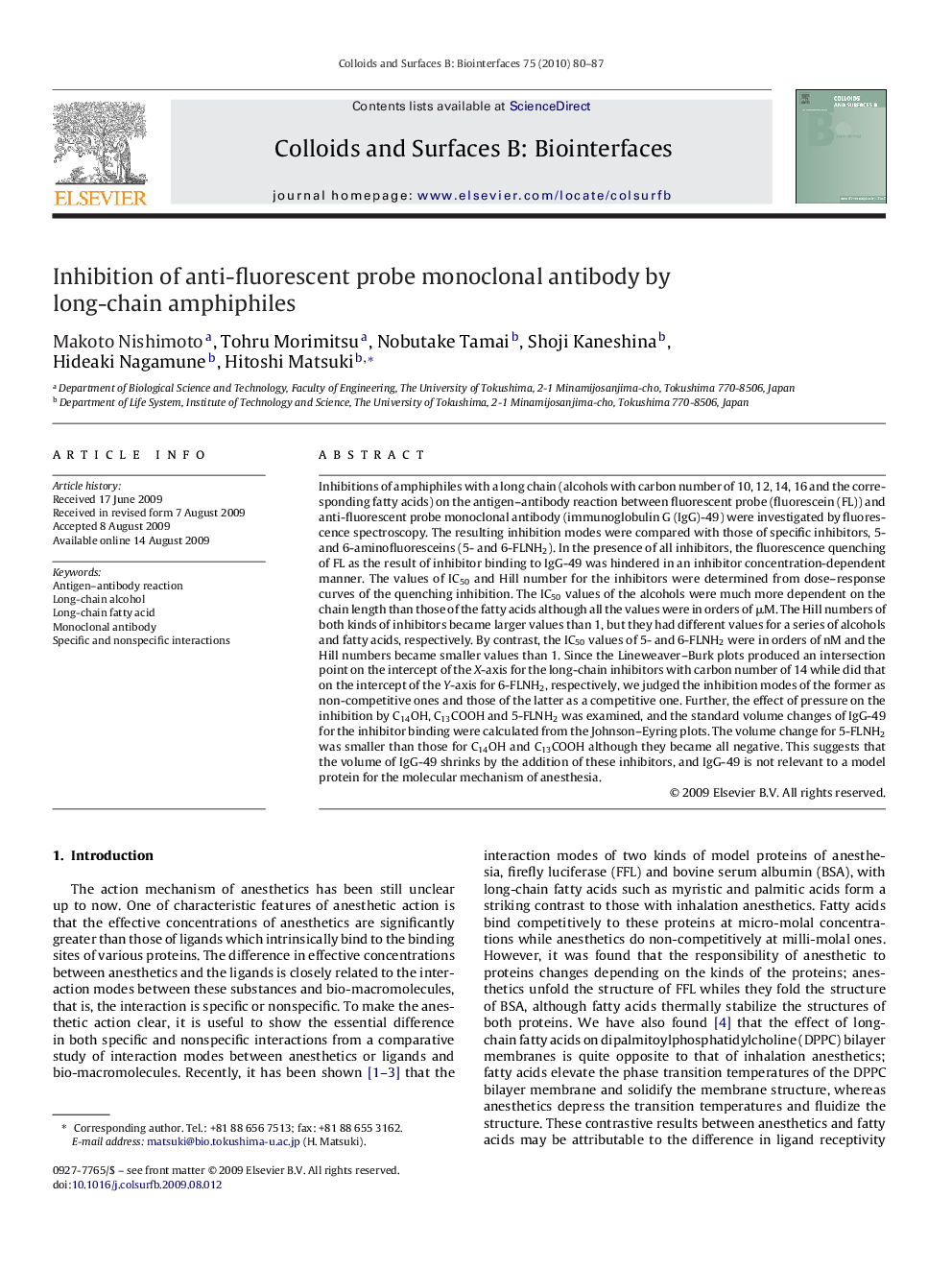| کد مقاله | کد نشریه | سال انتشار | مقاله انگلیسی | نسخه تمام متن |
|---|---|---|---|---|
| 601942 | 879959 | 2010 | 8 صفحه PDF | دانلود رایگان |

Inhibitions of amphiphiles with a long chain (alcohols with carbon number of 10, 12, 14, 16 and the corresponding fatty acids) on the antigen–antibody reaction between fluorescent probe (fluorescein (FL)) and anti-fluorescent probe monoclonal antibody (immunoglobulin G (IgG)-49) were investigated by fluorescence spectroscopy. The resulting inhibition modes were compared with those of specific inhibitors, 5- and 6-aminofluoresceins (5- and 6-FLNH2). In the presence of all inhibitors, the fluorescence quenching of FL as the result of inhibitor binding to IgG-49 was hindered in an inhibitor concentration-dependent manner. The values of IC50 and Hill number for the inhibitors were determined from dose–response curves of the quenching inhibition. The IC50 values of the alcohols were much more dependent on the chain length than those of the fatty acids although all the values were in orders of μM. The Hill numbers of both kinds of inhibitors became larger values than 1, but they had different values for a series of alcohols and fatty acids, respectively. By contrast, the IC50 values of 5- and 6-FLNH2 were in orders of nM and the Hill numbers became smaller values than 1. Since the Lineweaver–Burk plots produced an intersection point on the intercept of the X-axis for the long-chain inhibitors with carbon number of 14 while did that on the intercept of the Y-axis for 6-FLNH2, respectively, we judged the inhibition modes of the former as non-competitive ones and those of the latter as a competitive one. Further, the effect of pressure on the inhibition by C14OH, C13COOH and 5-FLNH2 was examined, and the standard volume changes of IgG-49 for the inhibitor binding were calculated from the Johnson–Eyring plots. The volume change for 5-FLNH2 was smaller than those for C14OH and C13COOH although they became all negative. This suggests that the volume of IgG-49 shrinks by the addition of these inhibitors, and IgG-49 is not relevant to a model protein for the molecular mechanism of anesthesia.
Journal: Colloids and Surfaces B: Biointerfaces - Volume 75, Issue 1, 1 January 2010, Pages 80–87